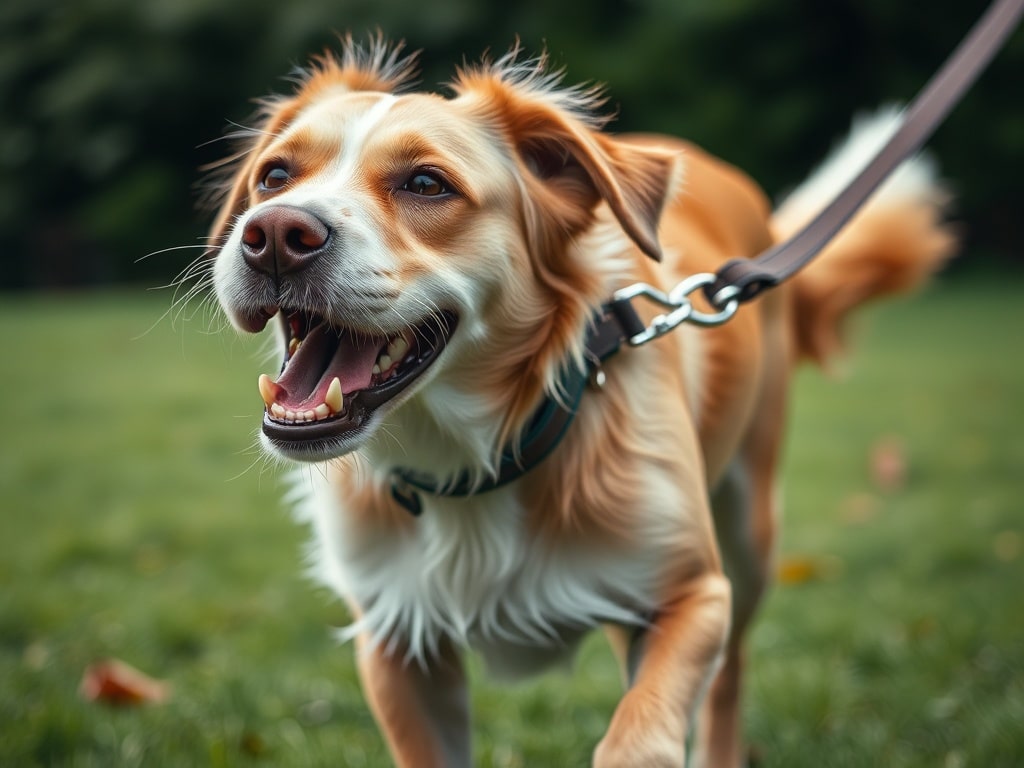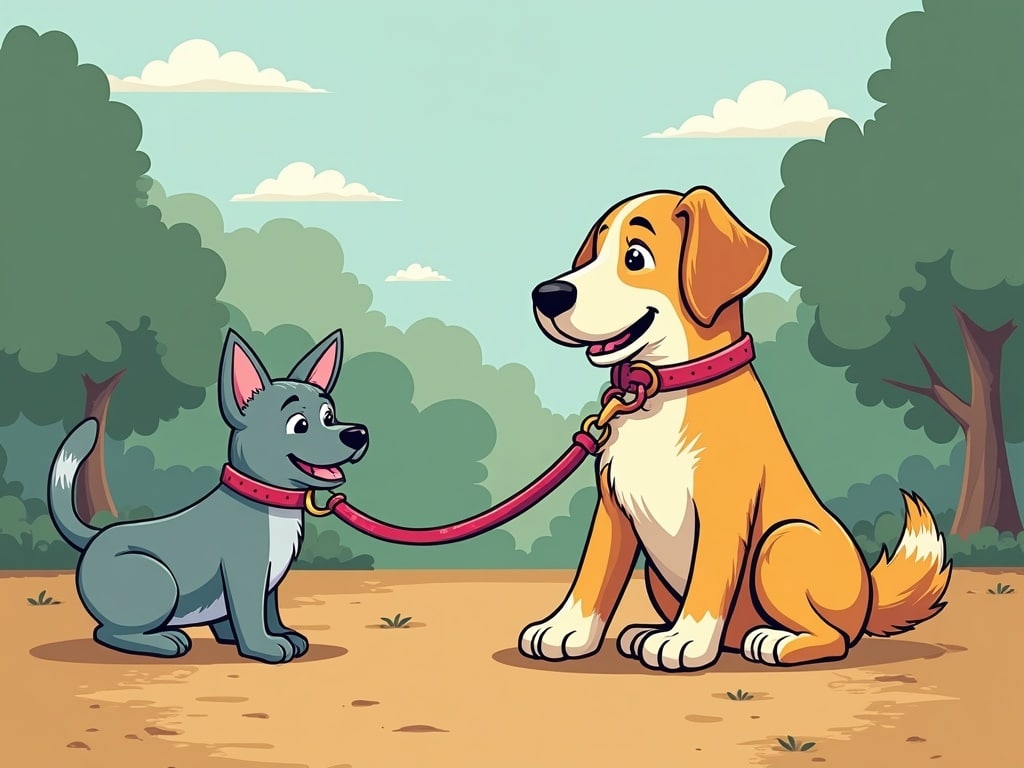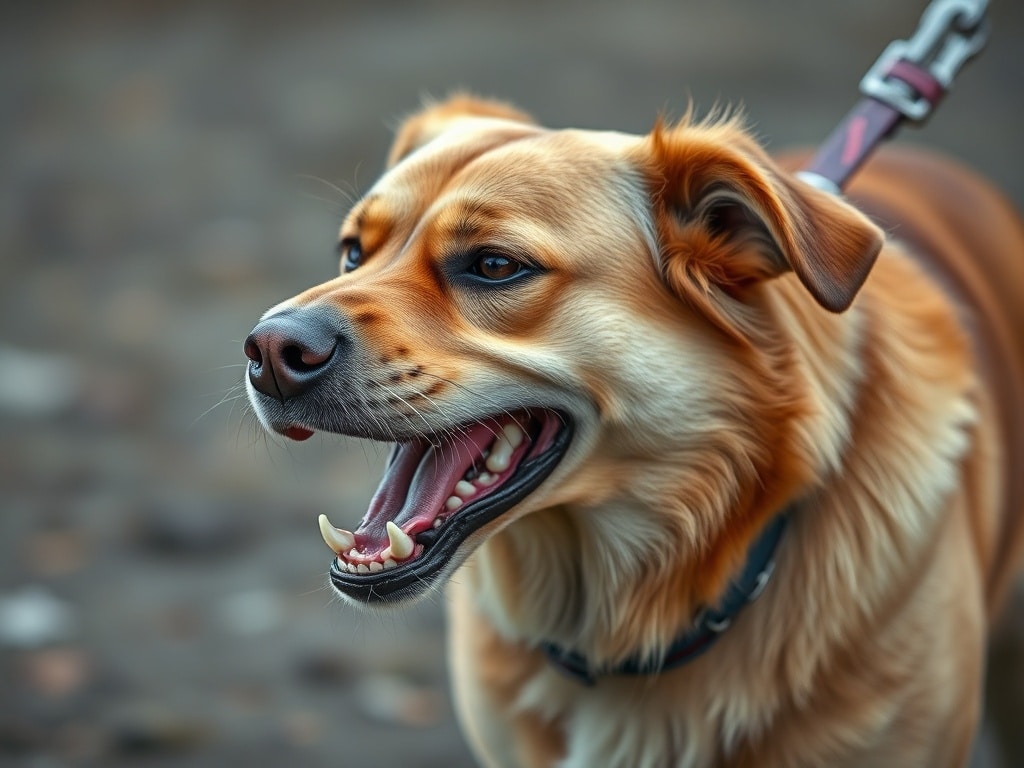Leash Reactivity SOS: Is Your Dog a Barking Bandit on Walks?
Imagine this: you’re strolling through the park, enjoying a sunny afternoon, when suddenly, your dog transforms into a barking, lunging whirlwind at the sight of another dog. Sound familiar? You’re not alone. Leash reactivity, or a dog barking at other dogs on walks, is a common and frustrating issue for many dog owners. But don’t despair – understanding the problem is the first step toward a calmer, more enjoyable walk for both you and your canine companion.
What is Leash Reactivity in Dogs?
Leash reactivity isn’t about aggression; it’s more about frustration and anxiety. Imagine being forced to approach something you fear or find overly exciting. Leash reactivity is when a dog overreacts – usually barking, lunging, or pulling – when encountering other dogs (or sometimes other triggers like people, cars, or squirrels) while on a leash. The leash restricts their natural ability to approach, retreat, or use subtle body language, leading to a heightened emotional response.
What are the Common Causes of Dog Barking at Other Dogs on Walks?
Several factors can contribute to leash reactivity:
- Frustration: The dog wants to greet another dog but is restrained.
- Fear: The dog is scared of other dogs and feels trapped on the leash.
- Anxiety: General anxiety can manifest as reactivity on walks.
- Poor Socialization: Lack of positive experiences with other dogs, especially during puppyhood.
- Learned Behavior: The dog has learned that barking gets a reaction (even if it’s negative attention).
- Genetics: Some breeds are predisposed to higher reactivity levels.
What are the Signs of Leash Reactivity Beyond Just Barking?
Barking is the most obvious sign, but leash reactivity manifests in other ways too:
- Lunging or pulling on the leash
- Growling
- Snapping or air-biting
- Whining
- Excessive panting
- Stiff body posture
- Raised hackles (fur on their back standing up)
- Tail tucked or held high and stiff
- Dilated pupils
How Does Leash Reactivity Differ From Aggression?
This is crucial to understand. Aggression is a deliberate intent to harm. Leash reactivity is often rooted in fear or frustration. A truly aggressive dog will typically show consistent, escalating aggression even off-leash. A leash-reactive dog may be perfectly friendly off-leash in a controlled environment. However, leash reactivity *can escalate to aggression if the dog feels cornered or overly threatened. It’s crucial to manage it proactively.

What are Immediate Steps to Take When Your Dog Starts Barking on a Walk?
In the heat of the moment, your priority is de-escalation and safety:
- Create Distance: Immediately move away from the trigger. Cross the street, turn around, or step behind a car. Distance is your best friend.
- Stay Calm: Your dog feeds off your energy. Take deep breaths and avoid yelling or jerking the leash.
- Distract: If possible, get your dog’s attention with a high-value treat or a favorite toy.
- Emergency U-Turn: Teach your dog a cue (like Let’s go!) that signals an immediate about-face. Practice this in low-distraction environments first.
- Avoid Confrontation: Don’t let your dog work it out with the other dog on-leash. This can reinforce the reactive behavior.
What Training Techniques Can Help Reduce Leash Reactivity?
Training is key to long-term success. Here are some effective techniques:
- Counter-Conditioning and Desensitization (CC&D): This involves changing your dog’s emotional response to the trigger. Start at a distance where your dog is aware of the trigger but not reacting. Pair the appearance of the trigger with something positive, like high-value treats. Gradually decrease the distance as your dog becomes more comfortable.
- Look at That Game: Teach your dog to look at the trigger on cue and then immediately look back at you for a reward. This helps them associate the trigger with positive reinforcement.
- Focus Training: Teach your dog to focus on you on command, even in distracting environments. This can be a lifesaver when encountering triggers on walks.
- Impulse Control Exercises: Exercises like wait and leave it can improve your dog’s overall impulse control, which can translate to less reactivity.
- Relaxation Protocol: Teach your dog a relaxation cue (like settle) that can help them calm down in stressful situations.
How Can You Use Positive Reinforcement to Manage Your Dog’s Barking?
Positive reinforcement is the most effective and humane way to address leash reactivity. Focus on rewarding calm, non-reactive behavior:
- Reward Calmness: When your dog sees another dog and remains calm, even for a second, immediately reward them with a treat and praise.
- Avoid Punishments: Punishing your dog for barking will only increase their anxiety and worsen the reactivity.
- Use High-Value Treats: Choose treats that your dog finds irresistible, like small pieces of cooked chicken, cheese, or hot dogs.
- Timing is Key: Reward your dog immediately after they display the desired behavior.
- Be Consistent: Consistently reward calm behavior and avoid reinforcing reactive behavior.
What Equipment Can Help Control a Leash-Reactive Dog?
The right equipment can provide more control and safety, but it’s not a substitute for training:

- Front-Clip Harness: These harnesses clip in the front, making it easier to redirect your dog’s attention and prevent pulling.
- Head Halter (Gentle Leader): Similar to a horse halter, this gives you more control over your dog’s head and prevents them from pulling or lunging. It’s crucial to introduce it gradually and positively.
- Leash Length: Use a standard 4-6 foot leash. Avoid retractable leashes, as they offer less control and can encourage pulling.
- Muzzle (Optional): If your dog has a history of biting, a muzzle can provide an added layer of safety. Choose a basket muzzle that allows your dog to pant and drink.
How Important is it to Manage Your Dog’s Environment to Reduce Reactivity?
Environmental management is crucial, especially in the early stages of training:
- Avoid Triggering Situations: If you know your dog reacts to other dogs in the park, avoid the park during peak hours.
- Walk at Off-Peak Times: Choose quieter times of day for walks when there are fewer dogs around.
- Change Your Route: Vary your walking route to avoid areas where you frequently encounter triggers.
- Use Visual Barriers: Walk on the opposite side of the street or use parked cars as a barrier between your dog and other dogs.
- Create a Safe Space: Ensure your dog has a safe and comfortable space at home where they can retreat to when feeling overwhelmed.
When Should You Seek Professional Help From a Dog Trainer or Behaviorist?
If you’re struggling to manage your dog’s leash reactivity on your own, or if the reactivity is severe, don’t hesitate to seek professional help. A qualified dog trainer or certified behaviorist can provide personalized guidance and develop a training plan tailored to your dog’s specific needs.
What are Some Realistic Expectations for Managing Leash Reactivity?
Leash reactivity is often a long-term management issue, not a quick fix. Here’s what to expect:
- Progress Takes Time: It may take weeks or months to see significant improvement.
- Setbacks are Normal: There will be good days and bad days. Don’t get discouraged by setbacks.
- Consistency is Key: Consistent training and management are essential for success.
- Complete Elimination May Not Be Possible: Your goal may be to reduce the intensity and frequency of the reactivity, rather than eliminate it entirely.
- Focus on Management: Even with training, you may still need to manage your dog’s environment to prevent reactivity.
How Much Does it Cost to Treat Leash Reactivity?
The cost of treating leash reactivity varies depending on the severity of the problem and the type of professional help you seek:
- Group Training Classes: $100 – $300 for a series of classes.
- Private Training Sessions: $75 – $200 per session.
- Behavioral Consultation: $150 – $500 for an initial consultation with a certified behaviorist.
- Medications (if needed): Cost varies depending on the medication and dosage.
What Exercises Can Owners Do to Improve Their Dog’s Focus and Attention?
Improving your dog’s focus and attention is crucial for managing leash reactivity. Here are some exercises you can try:
- Name Recognition: Say your dog’s name and reward them when they look at you.
- Watch Me: Teach your dog to look directly into your eyes on command.
- Leave It: Place a treat on the floor and cover it with your hand. When your dog tries to get the treat, say Leave it. Once your dog backs away, reward them with a different treat.
- Recall: Practice calling your dog to you in increasingly distracting environments.
- Puzzle Toys: Puzzle toys can help keep your dog mentally stimulated and focused.
How Does Diet Affect a Dog’s Reactivity?
While diet isn’t a direct cause of leash reactivity, it can play a role in your dog’s overall temperament and anxiety levels:
- High-Quality Food: Feed your dog a high-quality diet that is free of artificial colors, flavors, and preservatives.
- Avoid Processed Foods: Processed foods can contain ingredients that can contribute to hyperactivity and anxiety.
- Consider Supplements: Some supplements, like omega-3 fatty acids and L-theanine, may help reduce anxiety in some dogs. Consult with your veterinarian before adding any supplements to your dog’s diet.
- Food Sensitivities: in rare cases, food sensitivities can manifest as behavioral changes.
What are Common Mistakes Owners Make When Trying to Correct Leash Reactivity?
Avoiding these common mistakes can significantly improve your chances of success:
- Punishing the Dog: Punishment will only increase anxiety and make the reactivity worse.
- Inconsistency: Inconsistent training and management will confuse your dog and slow progress.
- Flooding: Exposing your dog to their triggers at close range without proper preparation can overwhelm them and worsen the reactivity.
- Ignoring the Dog’s Signals: Pay attention to your dog’s body language and intervene before they become overly stressed.
- Giving Up Too Soon: Leash reactivity takes time and patience to address. Don’t give up if you don’t see results immediately.
- Lack of Exercise/Enrichment: A tired dog is a good dog. Make sure to provide enough physical and mental stimulation, or consider consulting From Woof to Zen: Transform Your Dog’s Solo Time (and Your Sanity!).
Dealing with a dog barking at other dogs on walks can be challenging, but with patience, consistency, and the right approach, you can help your dog overcome their leash reactivity and enjoy calmer, more pleasant walks together. Remember to celebrate small victories and focus on building a positive relationship with your furry friend. You’ve got this!

